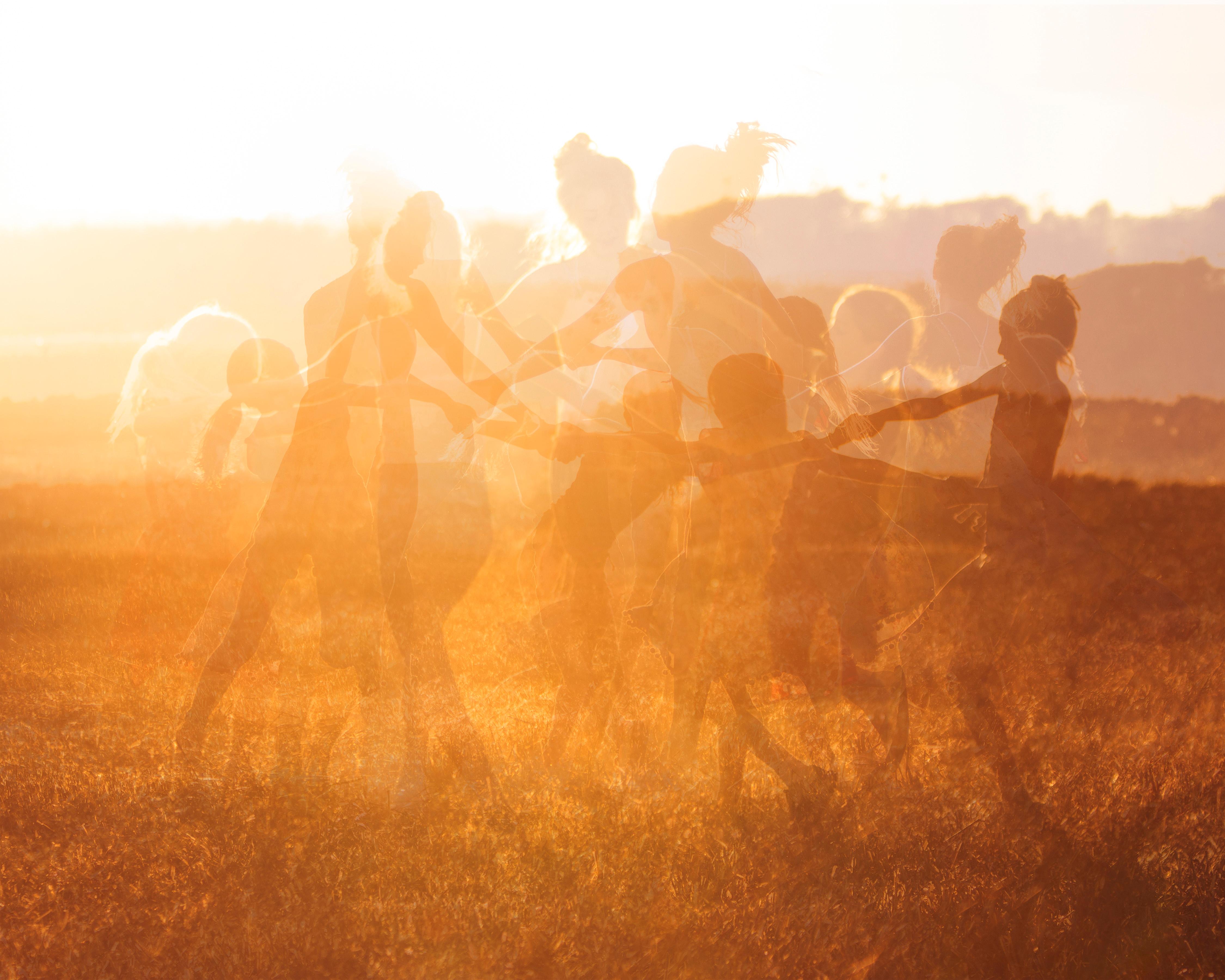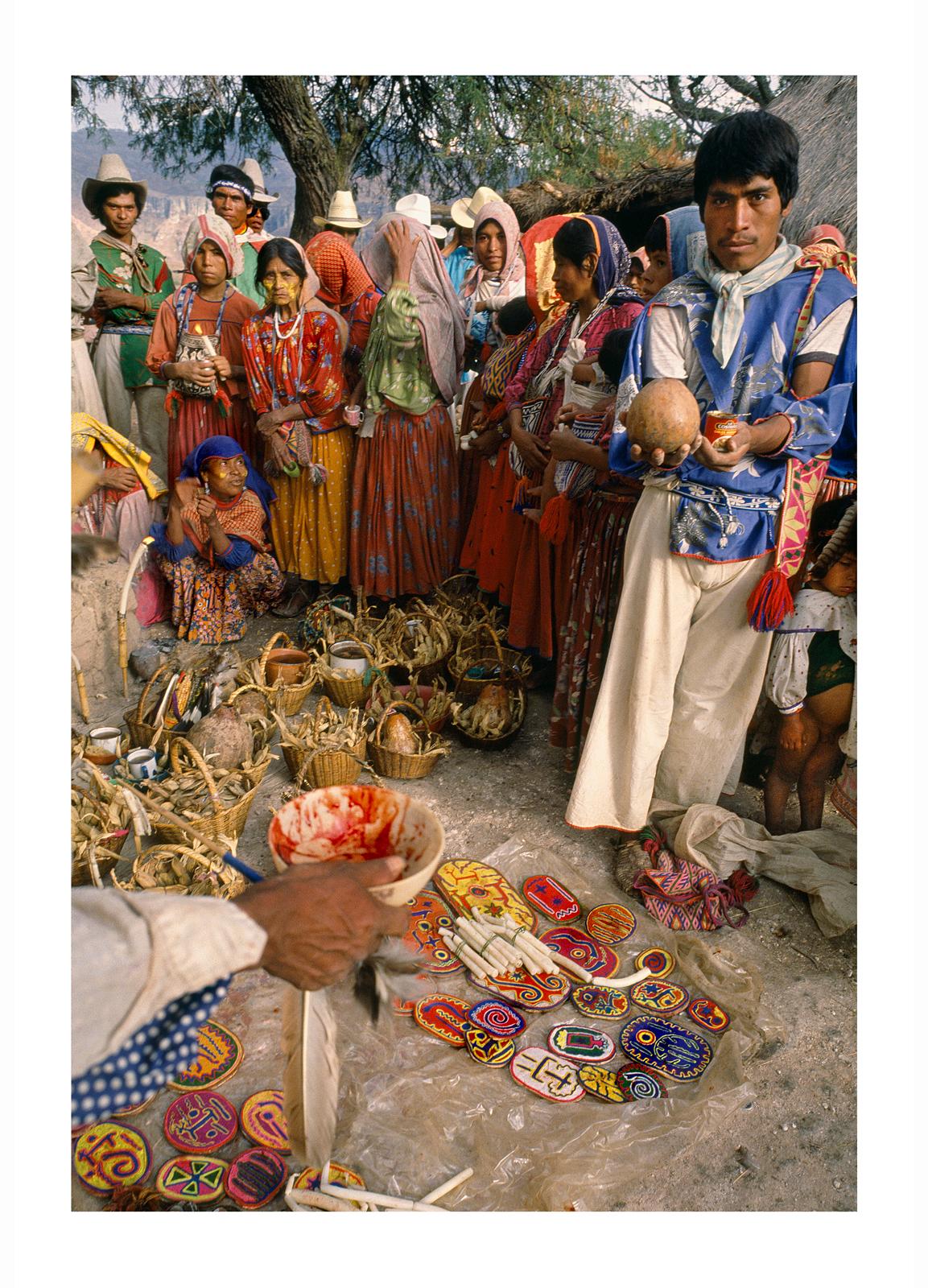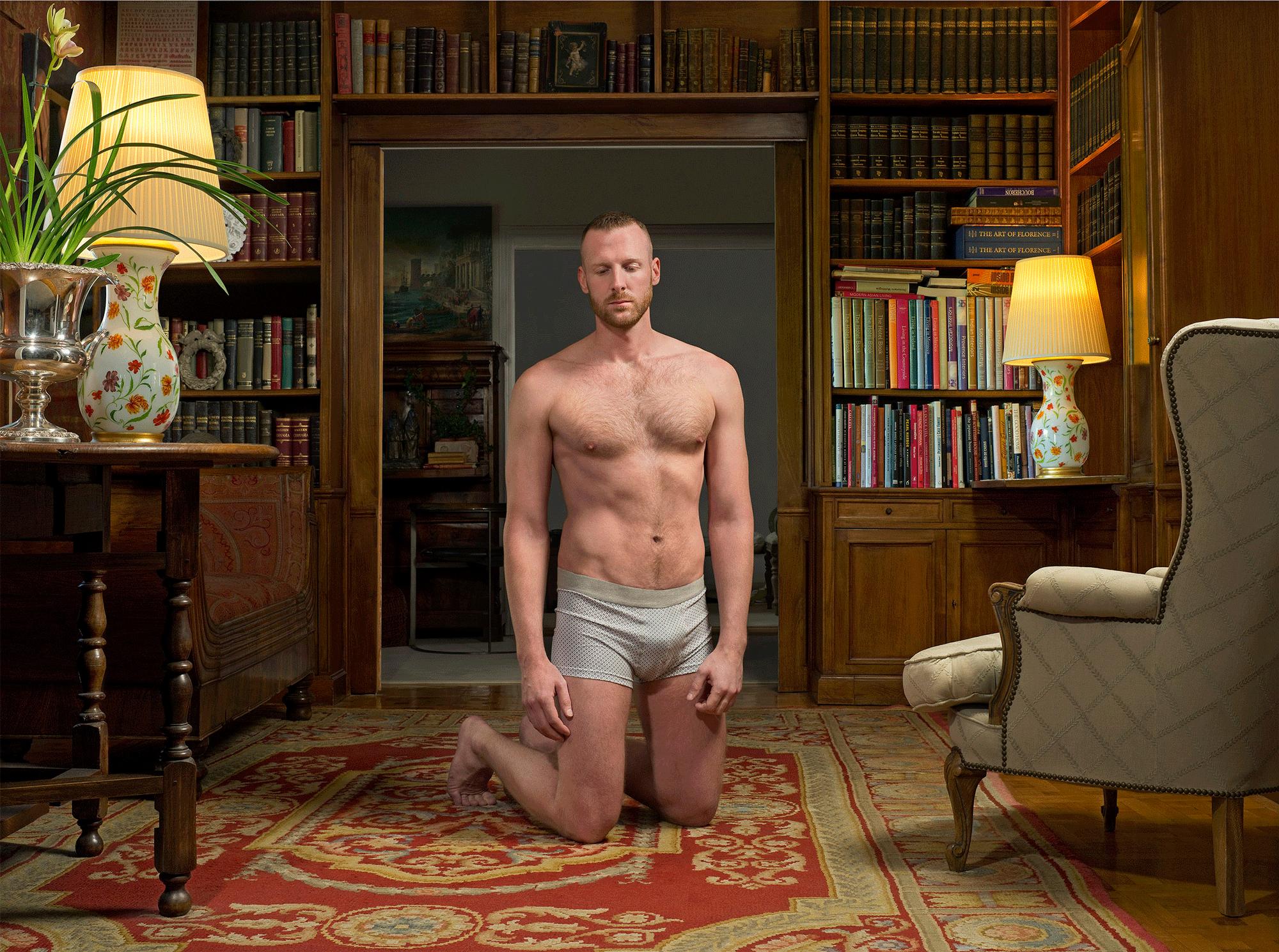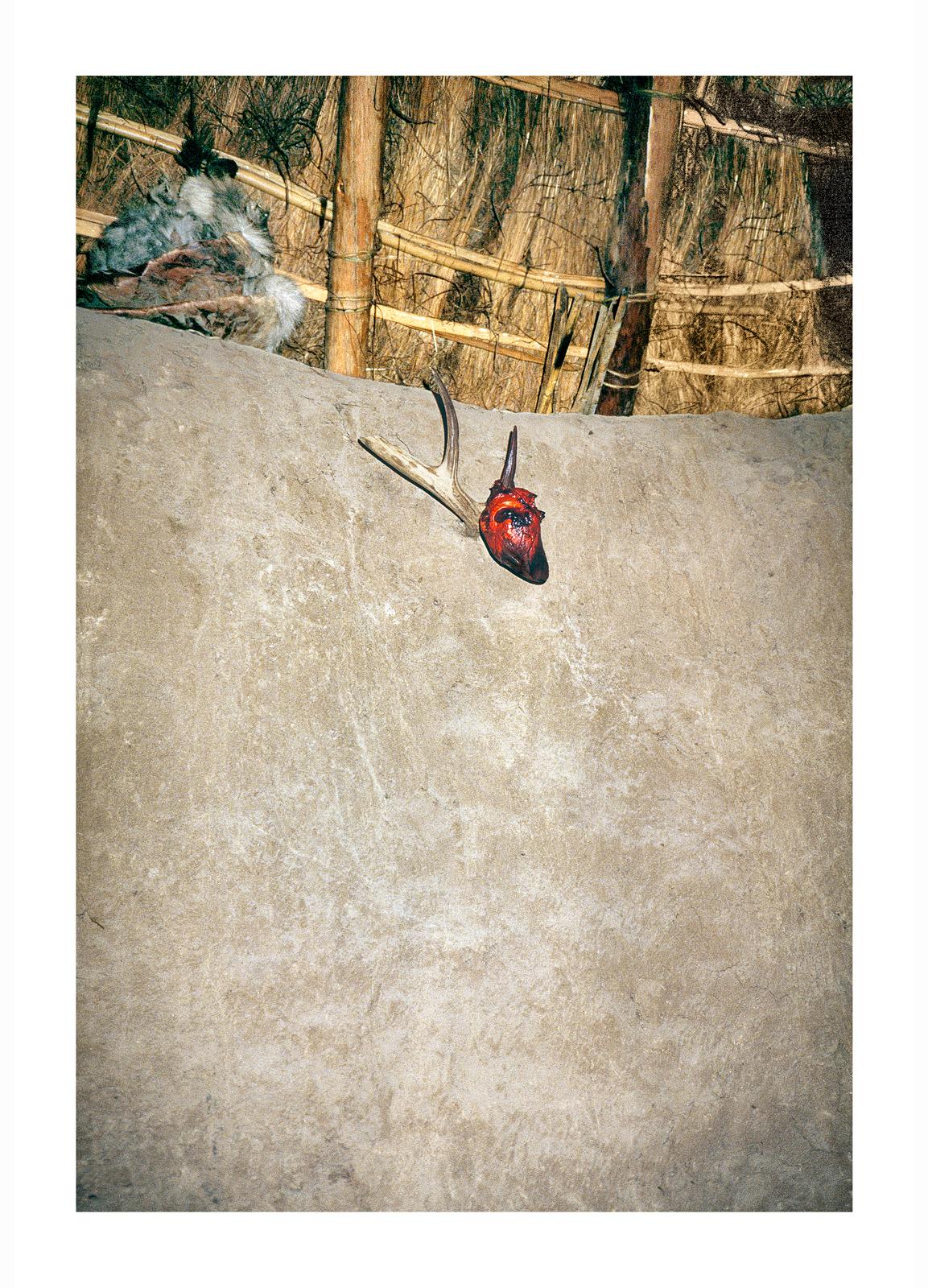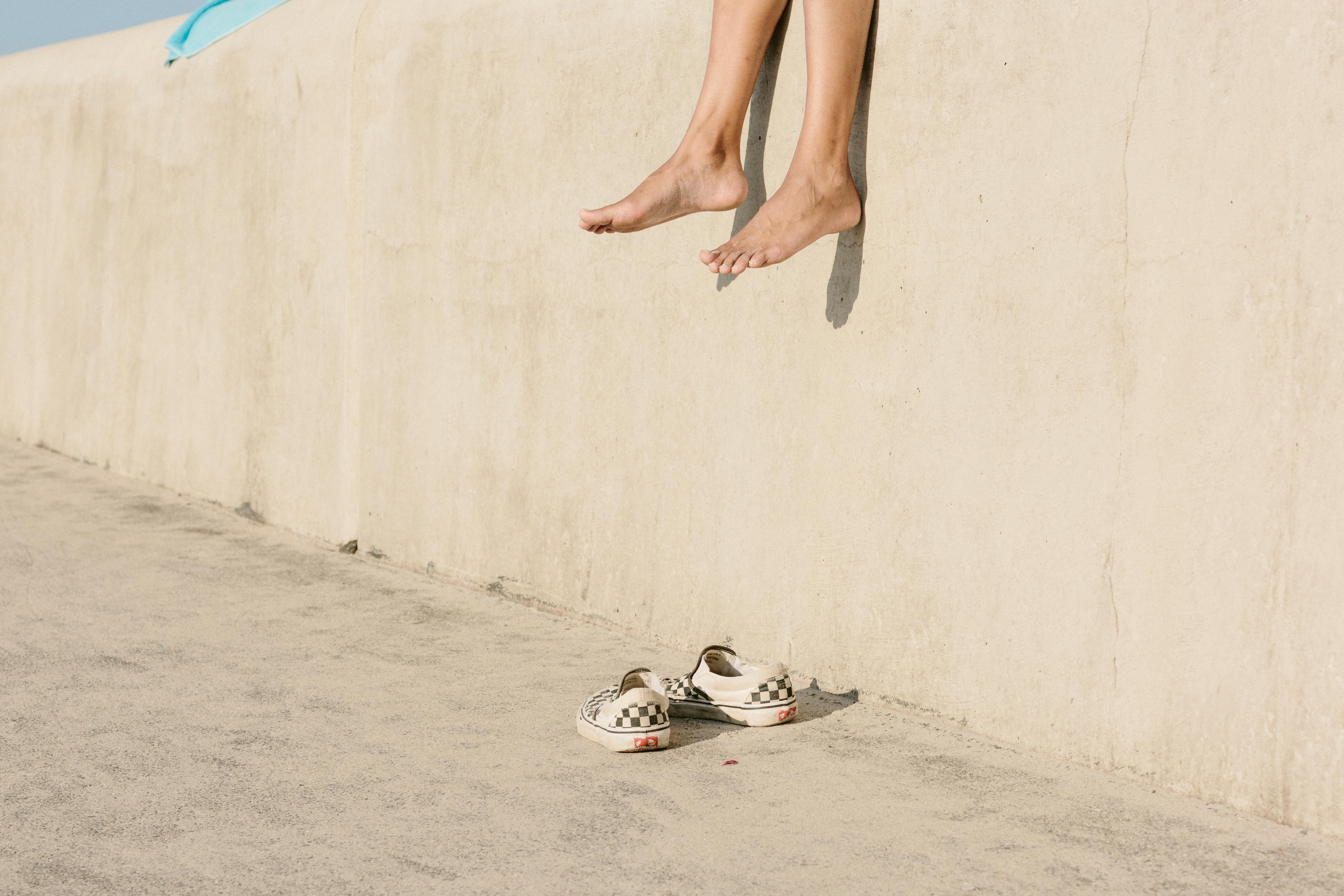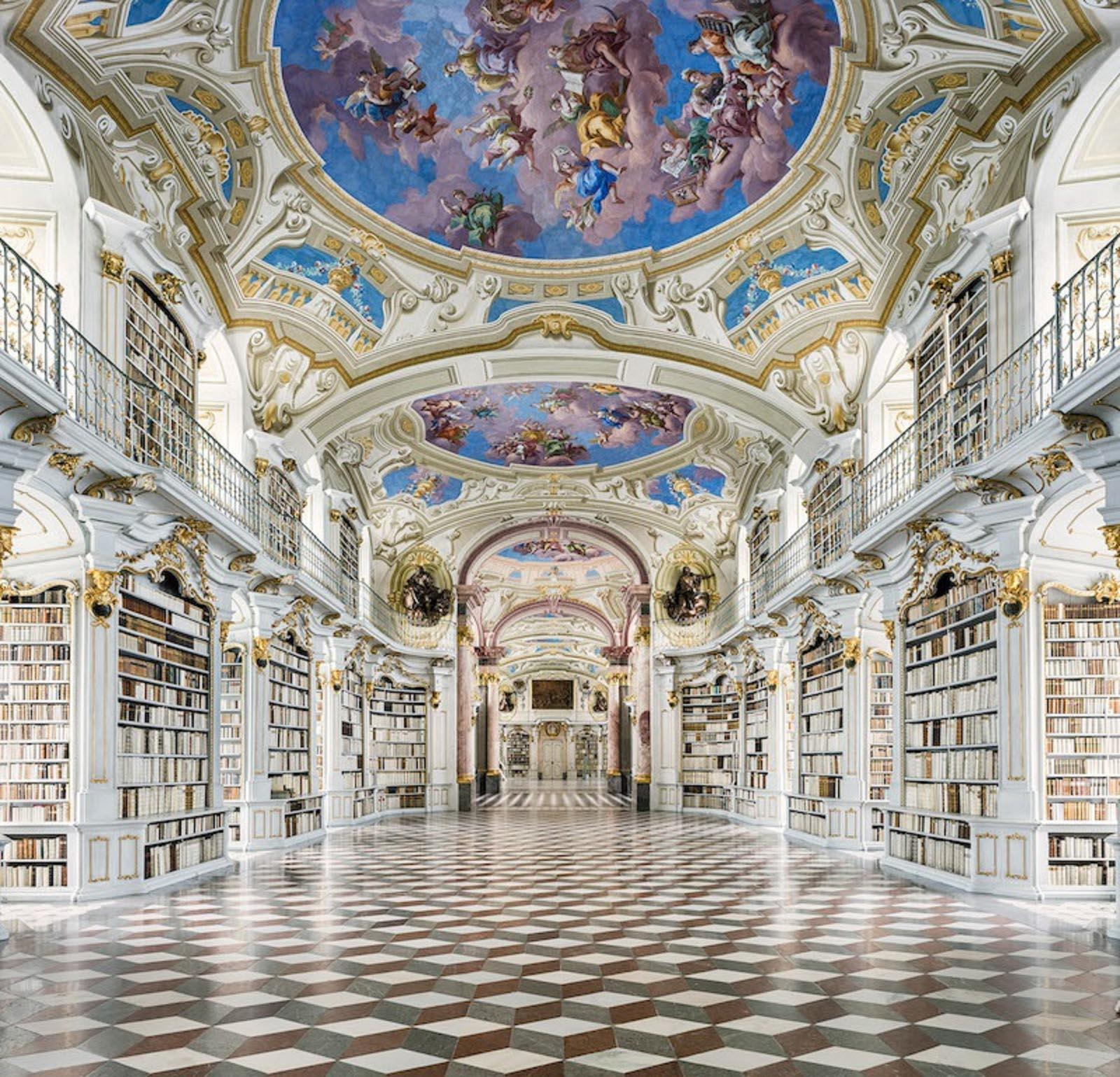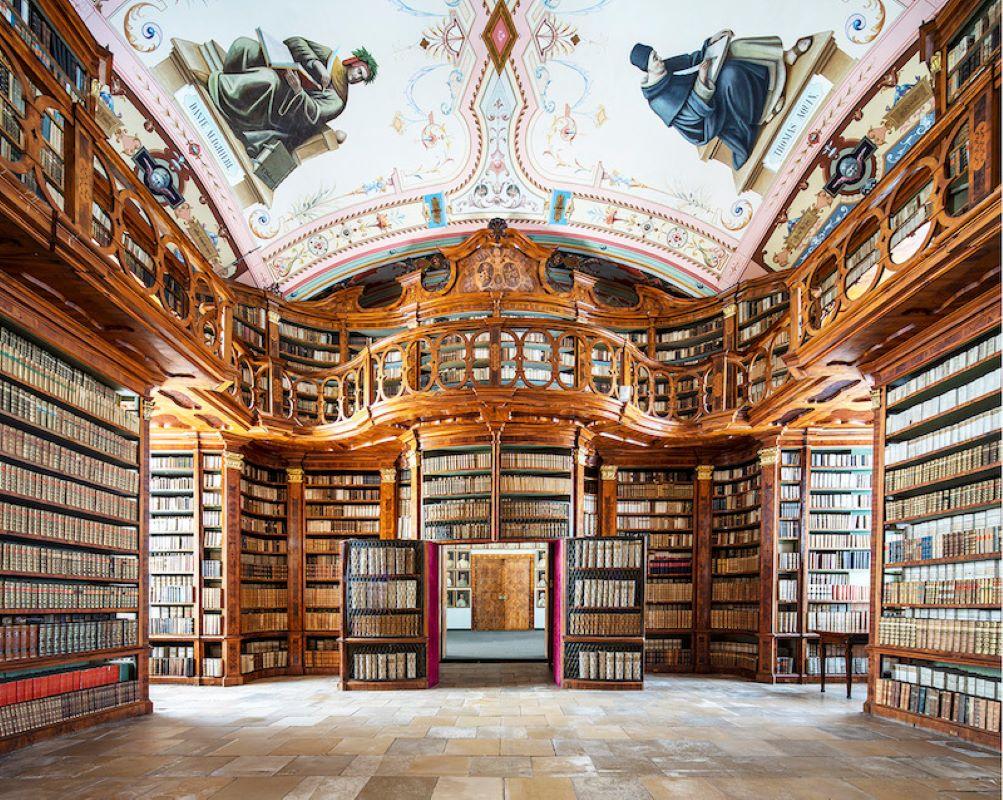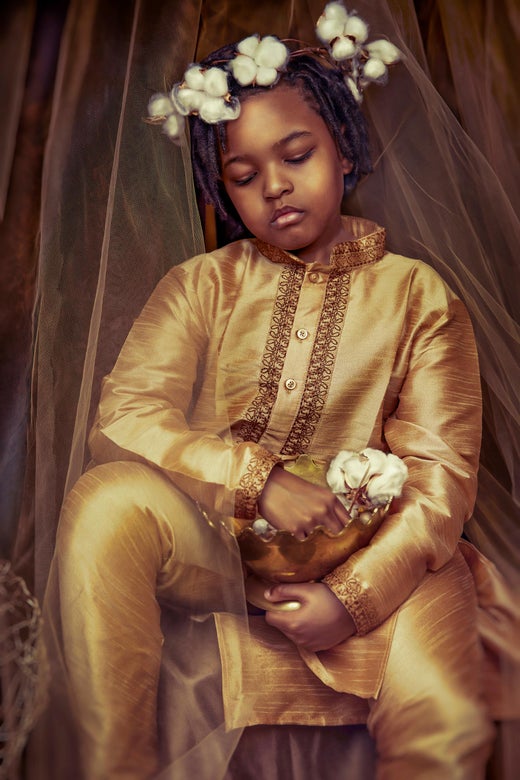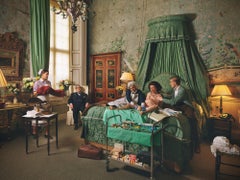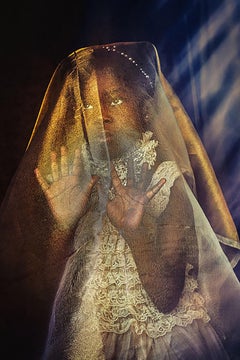
Veiled...Power in Those Hands- Stunning Photograph of Creole Girl in Black Gold
View Similar Items
Tokie Rome-Taylor Veiled...Power in Those Hands- Stunning Photograph of Creole Girl in Black Gold2018
2018
About the Item
- Creator:Tokie Rome-Taylor
- Creation Year:2018
- Dimensions:Height: 33 in (83.82 cm)Width: 24 in (60.96 cm)
- Medium:
- Movement & Style:
- Period:
- Framing:Frame IncludedFraming Options Available
- Condition:
- Gallery Location:Gilroy, CA
- Reference Number:1stDibs: LU129826982372
Atlanta, Georgia-based artist Tokie Rome-Taylor examines themes of time, spirituality, visibility and identity through photography, cyanotype and embroidery. She explores the sense of belonging and self-perception as it begins in childhood. Through constructed portraits of proud Black and Brown children dressed in fine fabrics and jewelry, and depicted with family heirlooms and historical objects, Tokie’s work deliberately counters the stereotypical narratives in Black representation and combats their historical erasure.
Denied access to traditional materials and practices in the Americas, a creolization of symbolic elements of European status and wealth have been utilized to visually connect to ancestral practices of adornment and spirituality. Rich fabrics, historical objects and layered directional lighting are inspired by Renaissance paintings that historically did not depict people of color. The use of beading, embroidery, gold leafing and wax are inspired by the materials used in creation and adornment of clothing within traditional West African culture. Through these elements, each sitter’s beauty and worth are evoked, conveying an elevation of the Black body. Tokie hopes that through her work her children and those that come after will perceive their place in society through a lens of belonging and equality.
Tokie Rome-Taylor is an educator and working artist. She is a Fund for Teachers fellowship recipient, studying photography in Santa Fe, New Mexico, and in San Francisco, California. Her work has been a part of many national and international exhibitions, including at the Griffin Museum of Photography, the Marietta Cobb Museum of Art, SP-Foto SP-Arte Fair (São Paulo, Brazil), the Masur Museum of Art, the Zuckerman Museum of Art, the Lyndon House Art Center and Agnes Scott College among others.
Tokie is a recipient of the Virginia Twinam Smith Purchase Award, adding her work to the permanent collection of the Museum of Contemporary Art of Georgia as well as the Legacy Award, bestowed by the Griffin Museum of Photography. Her work is held in multiple public and private collections and was recently acquired by the Petrucci Family Foundation Collection of African American Art.
Find a collection of original Tokie Rome-Taylor art on 1stDibs.
(Biography provided by Spalding Nix Fine Art)
- Veiled...Power in Those Hands- Stunning Photograph of Creole Girl in Black GoldLocated in Gilroy, CA"Veiled...Power in Those Hands" is a photographic portrait by Atlanta-based portrait photographer Tokie Rome-Taylor in her latest series, "My People Could Fly." Her works are highly ...Category
2010s Contemporary Figurative Photography
MaterialsDigital
- Royal Blood- Framed Photograph of Queen Elizabeth at Home Birth in BuckinghamBy Natalie LennardLocated in Gilroy, CA"Royal Blood" is part of international artist, Natalie Lennard's series Birth Undisturbed. "When the Queen’s parents suggested she move to a quieter room away from the crowds of well-wishers heard from the front of the Palace, she refused, insisting 'I want my baby to be born in my own room, amongst the things I know.'" Prince Edward was born 10 March 1964 in the Belgian Suite at Buckingham Palace, attended by midwife Helen Rowe and ob-gyn John Harold Peel. The last of Queen Elizabeth II’s children, it was the first to be active and conscious, at a time when “twilight sleep” - knocking out the mother and delivering via forceps - was beginning to phase out. All the Queen’s children were Royal homebirths. Her first birth in 1948 had already marked the end of centuries’ long tradition of Royal observation. Historically, at the birth of any potential heir to the throne, the room would be crowded with ladies-in-waiting, midwives, servants, and doctors, near crushing Marie Antoinette to death in 1778. With the birth of her fourth and final child, the Queen was said to lay down the terms for how she wanted to deliver, breaking yet another tradition by having her husband present. Prince Philip, Duke of Edinburgh, had always been a nervous expectant father and historically had chosen to spend the Queen’s labors swimming and playing squash. This time he stayed at her bedside holding her hand, the first male Royal partner to be present in the room in years. In our modern form of collective mass-observation, the whole world watched the two Royal births of Prince William and Kate Middleton...Category
2010s Contemporary Color Photography
MaterialsSatin Paper, Digital
- Royal Blood- Staged Photograph of Queen Elizabeth at Home Birth in BuckinghamBy Natalie LennardLocated in Gilroy, CA"Royal Blood" is part of international artist, Natalie Lennard's series Birth Undisturbed. "When the Queen’s parents suggested she move to a quieter room away from the crowds of well-wishers heard from the front of the Palace, she refused, insisting 'I want my baby to be born in my own room, amongst the things I know.'" Prince Edward was born 10 March 1964 in the Belgian Suite at Buckingham Palace, attended by midwife Helen Rowe and ob-gyn John Harold Peel. The last of Queen Elizabeth II’s children, it was the first to be active and conscious, at a time when “twilight sleep” - knocking out the mother and delivering via forceps - was beginning to phase out. All the Queen’s children were Royal homebirths. Her first birth in 1948 had already marked the end of centuries’ long tradition of Royal observation. Historically, at a birth of any potential heir to the throne, the room would be crowded with ladies-in-waiting, midwives, servants and doctors, near crushing Marie Antoinette to death in 1778. With the birth of her fourth and final child, the Queen was said to lay down the terms for how she wanted to deliver, breaking yet another tradition by having her husband present. Prince Philip, Duke of Edinburgh, had always been a nervous expectant father and historically had chosen to spend the Queen’s labours swimming and playing squash. This time he stayed at her bedside holding her hand, the first male Royal partner to be present in the room in years. In our modern form of collective mass-observation, the whole world watched...Category
2010s Contemporary Color Photography
MaterialsSatin Paper, Digital
- Royal Blood- Staged Photograph of Queen Elizabeth at Home Birth in BuckinghamBy Natalie LennardLocated in Gilroy, CA"Royal Blood" is part of international artist, Natalie Lennard's series Birth Undisturbed. "When the Queen’s parents suggested she move to a quieter room away from the crowds of well-wishers heard from the front of the Palace, she refused, insisting 'I want my baby to be born in my own room, amongst the things I know.'" Prince Edward was born 10 March 1964 in the Belgian Suite at Buckingham Palace, attended by midwife Helen Rowe and ob-gyn John Harold Peel. The last of Queen Elizabeth II’s children, it was the first to be active and conscious, at a time when “twilight sleep” - knocking out the mother and delivering via forceps - was beginning to phase out. All the Queen’s children were Royal homebirths. Her first birth in 1948 had already marked the end of centuries’ long tradition of Royal observation. Historically, at a birth of any potential heir to the throne, the room would be crowded with ladies-in-waiting, midwives, servants and doctors, near crushing Marie Antoinette to death in 1778. With the birth of her fourth and final child, the Queen was said to lay down the terms for how she wanted to deliver, breaking yet another tradition by having her husband present. Prince Philip, Duke of Edinburgh, had always been a nervous expectant father and historically had chosen to spend the Queen’s labours swimming and playing squash. This time he stayed at her bedside holding her hand, the first male Royal partner to be present in the room in years. In our modern form of collective mass-observation, the whole world watched...Category
2010s Contemporary Color Photography
MaterialsSatin Paper, Digital
- Royal Blood- Staged Photograph of Queen Elizabeth at Home Birth in BuckinghamBy Natalie LennardLocated in Gilroy, CA"Royal Blood" is part of international artist, Natalie Lennard's series Birth Undisturbed. "When the Queen’s parents suggested she move to a quieter room away from the crowds of we...Category
2010s Contemporary Color Photography
MaterialsSatin Paper, Digital
- The Whitechapel Woman- Framed Photograph of Birth Scene (Green+Blue+Red)By Natalie LennardLocated in Gilroy, CAEvery image in Birth Undisturbed is available to purchase as a limited edition, numbered photographic artwork. Available in 13x19, 35x47, 47x62, 59x75 as well. Inquire for more pricing and follow our storefront at Gallery 1202 for more work by Lennard. "The Whitechapel Woman" is part of international artist, Natalie Lennard's series Birth Undisturbed. “For the first time... I had been refused when offering chloroform... later I asked her why... shyly she turned from the window that burst the first light of dawn and said: ‘It didn’t hurt. It wasn’t meant to, was it, doctor?’" A chance phrase by a woman in a hovel in Whitechapel in 1911, that childbirth wasn’t meant to be painful, led the young Dr. Grantly Dick-Read to explore that in the absence of fear, the body's natural endorphins can replace the stress hormones that cause pain in childbirth. He went on to write the most influential book on childbirth of the last century, 'Childbirth Without Fear' in 1942, with the passage describing the encounter becoming famously enshrined in birth philosophy. “The window was broken, rain pouring in, the bed had no proper covering… the room was lit by one candle stuck in the top of a beer bottle on the mantelshelf, my patient covered in sacks… a neighbor had brought in a jug of water and a basin”. Dick-Read’s cinematic account for the first time is here visualized, re-enacted at Dennis Severs’ House, a ‘living museum’ of Victorian London. With inspiration from the composition of painting ‘The Doctor’ (1890) by Sir Luke Fildes...Category
2010s Contemporary Color Photography
MaterialsSatin Paper, Digital
$3,400 Sale Price20% Off
- 'Harvest Dance' Movement dance figures gold yellow orange fire nature wildBy Sophia MilliganLocated in Penzance, GB'Harvest Dance' Limited edition archival photograph. Unframed, hand signed and numbered _________________ Late August, captured in the glow of the evening sun, my daughters join han...Category
2010s Contemporary Figurative Photography
MaterialsArchival Ink, Archival Paper, Giclée, Archival Pigment
- HUICHOL: MOUNTAIN, DESERT, NEW YORK (`95-`21). Limited edition of 5.By PABLO ORTIZ-MONASTERIOLocated in Ciudad De México, MXDocumentary Photograph. Contemporary Inkjet on cotton. Limited edition of 5. Signed front and verso. Framed in lacquered black frame with spacer) The first person to photograph the Huichol in their remote communities in the inaccessible canyons of the Western Sierra Madre was probably the Norwegian anthropologist, Carl Lumholtz. He ventured into their territory in 1895, shortly before the arrival of the French naturalist and ethnographer Léon Diguet, who was also a photographer. Like so many who were engaged with documenting Indigenous peoples across the Americas in those brutal years of expansion and settlement, Lumholtz believed that the disappearance of his subjects was inevitable: “the weaker must succumb to the stronger, and the Indians will ultimately all become Mexicans.” The photographs of the Huichol by Pablo Ortiz Monasterio—taken on some twenty trips over the past three decades—prove that Lumholtz was fortunately, terribly wrong. They reveal abundant evidence of cultural survival (what the Huichol call “la costumbre”), made possible by their extraordinary resistance to the religious, nationalist, and economic forces that have long assaulted—and that continue to assault—Indigenous communities everywhere. Though Ortiz Monasterio is also an outsider, he does not operate—like Lumholtz or Diguet—as an old-fashioned preservationist, nor is he confident in the superiority of Western culture, nor is his work only destined for museum vitrines...Category
1990s Contemporary Color Photography
MaterialsInkjet, Archival Pigment
- Circus Christi: "Crucifixion"Located in Ciudad De México, MXFernando Bayona, Circus Christi: "Crucifixión". Fine Art Inkjet Print Sizes: S: 25.6 x 20.8 in. / Ed. 3 M: 41.7 x 33 in. / Ed. 3 L: 53.1 x 41.7 in. / Ed. 2 + 1A.P "Circus Christi is based on the question: What would happen if Jesus was born on the periphery of any major metropolis in the last three decades and was a rock band lead singer? The result is a group of images that visually reconfigures the usual viacrucis in an imaginary full of social problems around sexual ambiguity, drugs, sex, violence and music. Beyond the apparent provocation, Bayona's atmospheres are inspired by traditional scenes inscribed in the history of art, whose synchronic representation and symbolism disputes the social constructions around "sin" and "temptation" while rejecting all kinds of censorship and advocating for freedom of worship...Category
21st Century and Contemporary Contemporary Color Photography
MaterialsInkjet
- Once Upon a Time: "Bicephalous"Located in Ciudad De México, MXFernando Bayona, Once Upon a Time: "Bicephalous". Fine Art Inkjet Print Sizes: S: 25.6 x 20.8 in. / Ed. 3 M: 41.7 x 33 in. / Ed. 3 L: 53.1 x 41.7 in. / Ed. 2 + 1A.P "The narrati...Category
21st Century and Contemporary Contemporary Color Photography
MaterialsInkjet
- HUICHOL: MOUNTAIN, DESERT, NEW YORK (`95-`21). Limited edition of 5.By PABLO ORTIZ-MONASTERIOLocated in Ciudad De México, MXDocumentary Photograph. Contemporary Inkjet on cotton. Limited edition of 5. Signed front and verso. Framed in lacquered black frame with spacer) The first person to photograph the Huichol in their remote communities in the inaccessible canyons of the Western Sierra Madre was probably the Norwegian anthropologist, Carl Lumholtz. He ventured into their territory in 1895, shortly before the arrival of the French naturalist and ethnographer Léon Diguet, who was also a photographer. Like so many who were engaged with documenting Indigenous peoples across the Americas in those brutal years of expansion and settlement, Lumholtz believed that the disappearance of his subjects was inevitable: “the weaker must succumb to the stronger, and the Indians will ultimately all become Mexicans.” The photographs of the Huichol by Pablo Ortiz Monasterio—taken on some twenty trips over the past three decades—prove that Lumholtz was fortunately, terribly wrong. They reveal abundant evidence of cultural survival (what the Huichol call “la costumbre”), made possible by their extraordinary resistance to the religious, nationalist, and economic forces that have long assaulted—and that continue to assault—Indigenous communities everywhere. Though Ortiz Monasterio is also an outsider, he does not operate—like Lumholtz or Diguet—as an old-fashioned preservationist, nor is he confident in the superiority of Western culture, nor is his work only destined for museum vitrines...Category
1990s Contemporary Color Photography
MaterialsInkjet, Archival Pigment
- Out of the Blue: "The Dinner".Located in Ciudad De México, MXFernando Bayona, Out of the Blue: "The Dinner". Fine Art Inkjet Print Sizes: S: 25.6 x 20.8 in. / Ed. 3 M: 41.7 x 33 in. / Ed. 3 L: 53.1 x 41.7 in. / Ed. 2 + 1A.P In out of the ...Category
21st Century and Contemporary Contemporary Color Photography
MaterialsInkjet
